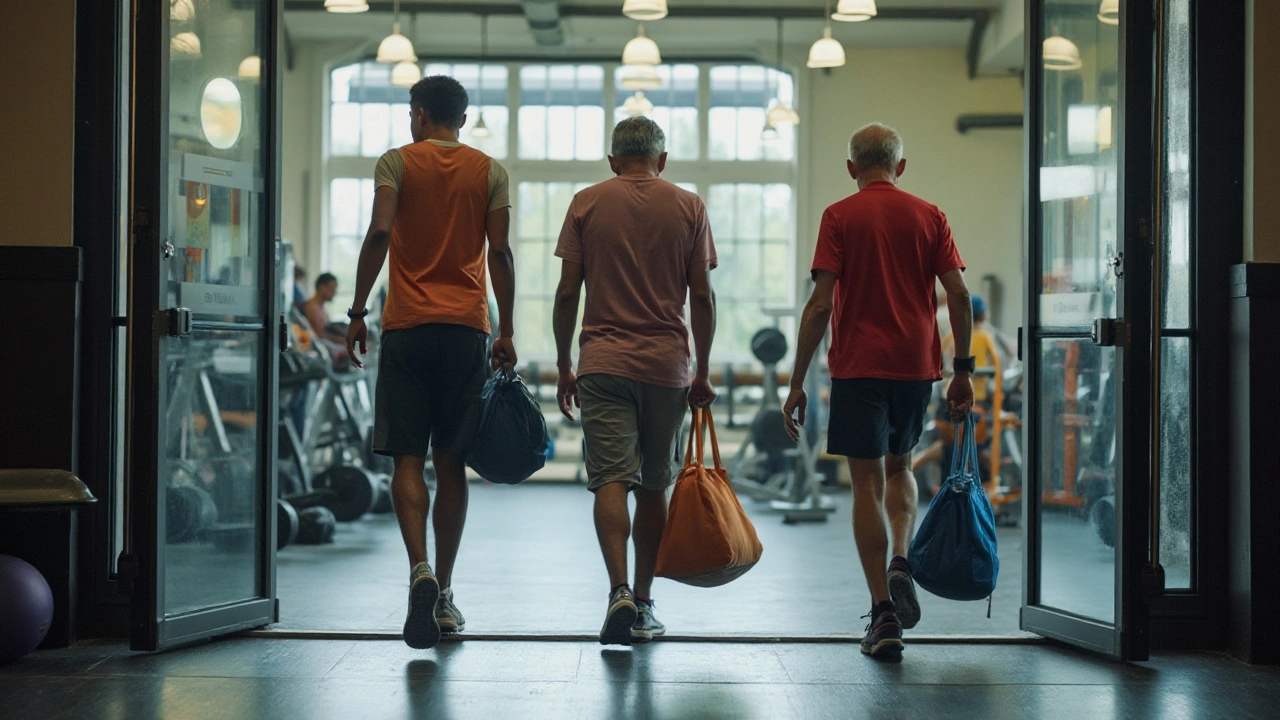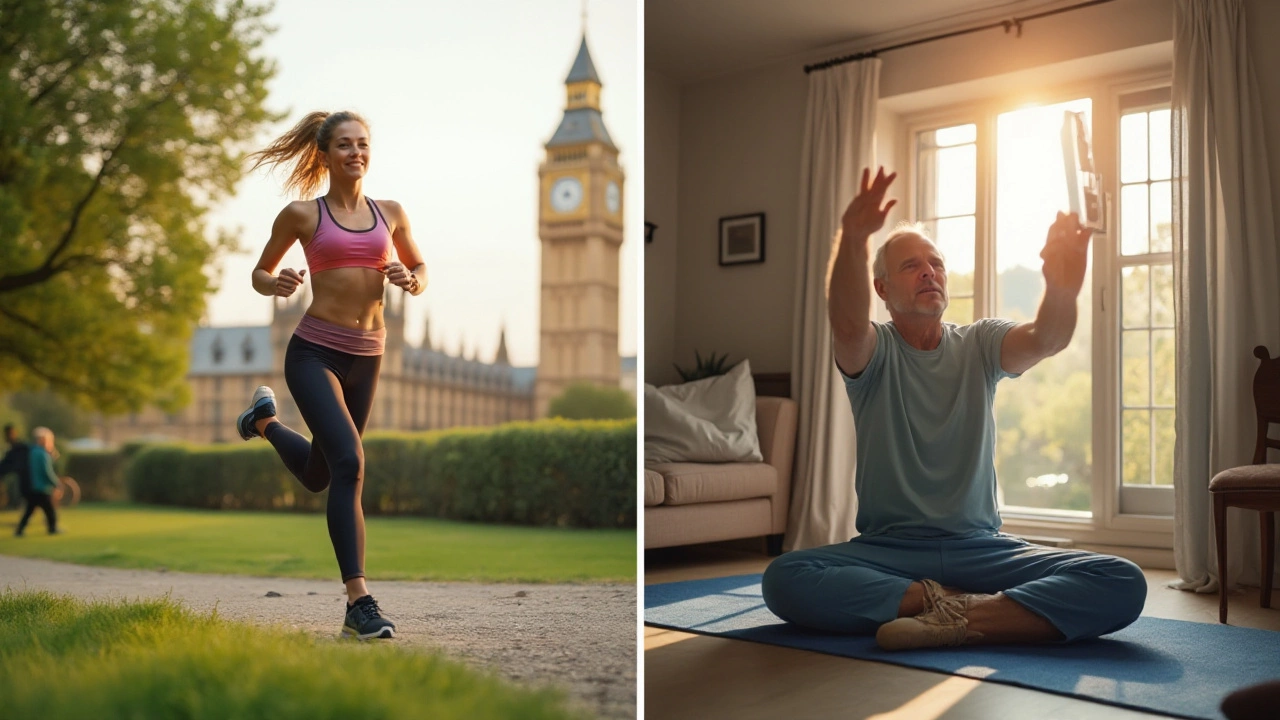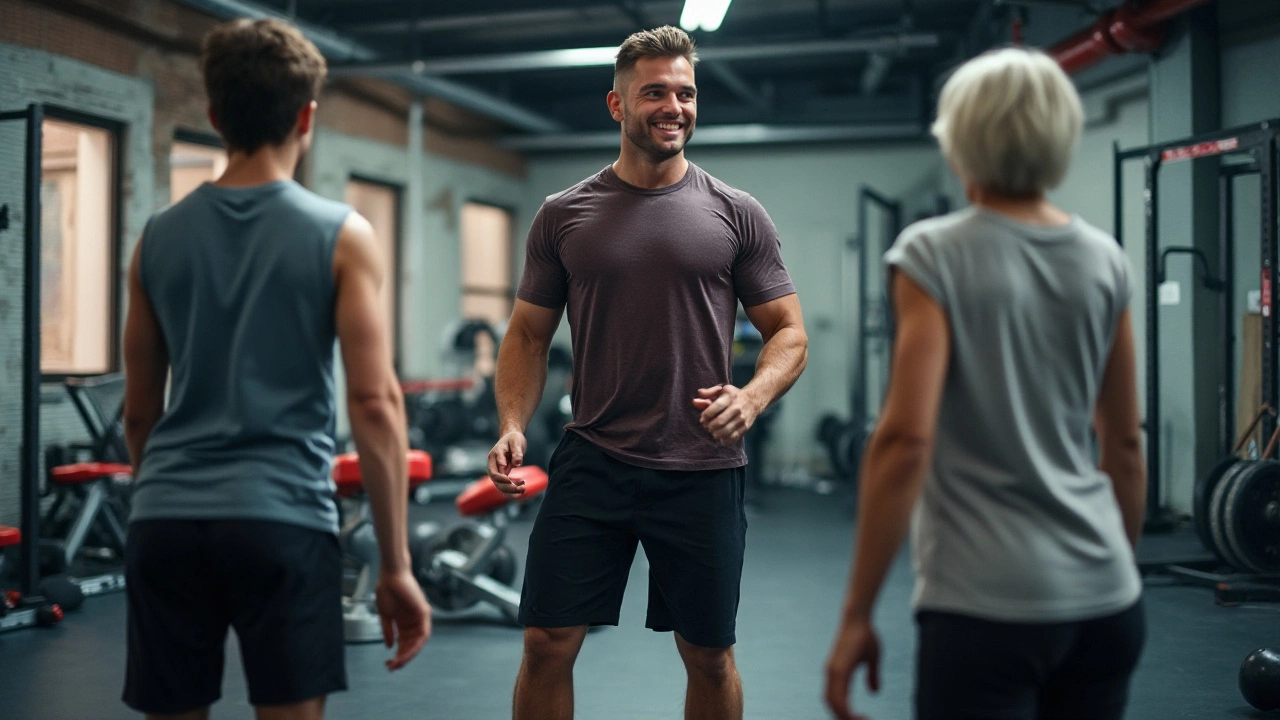Best Age to Start Gym: Fitness Tips You Need to Know

Embarking on a fitness journey at the gym can be both exciting and daunting. The question often arises: when is the best age to start? The truth is, it's never too early or too late to prioritize your health and well-being through exercise.
While young gym-goers can take advantage of rapid recovery and muscle-building capabilities, older individuals bring patience and endurance. Each stage of life brings unique strengths and challenges, and understanding them can help tailor your workout plan. Let's explore the ideal characteristics of different age groups and how they can make the most out of their gym sessions.
- Benefits of Starting Young
- Adults in the Gym: Workouts for 20s-40s
- Approaching Fitness in Your 50s and Beyond
- Exercises Suitable for All Ages
- Importance of Listening to Your Body
- Tailoring Your Routine to Fit Age
Benefits of Starting Young
Beginning your gym journey at a young age offers a myriad of advantages that can shape your health and fitness for years to come. Younger individuals, especially those in their teens and early twenties, often possess heightened energy levels and quicker recovery times. This can lead to more intense and frequent workouts, fostering rapid improvements in strength, endurance, and overall fitness. With a growing interest in fitness among youth, the gym becomes not only a place for physical development but also a social setting where friendships are forged and motivation thrives. The habit of regular exercise, once established early on, tends to stick, paving the way for a lifetime of health benefits.
Engaging in regular exercise from an early age can significantly enhance bone density, which is crucial as one grows older. Weight-bearing exercises such as squats and deadlifts performed under proper supervision can contribute to stronger bones, reducing the risk of osteoporosis in later life. Furthermore, starting young allows individuals to cultivate healthy habits long before adult responsibilities become demanding. This is a golden opportunity to learn about nutrition, balance, and time management, integrating fitness seamlessly into daily routines. Regular attendance at the gym nurtures discipline and self-confidence, often spilling over into other areas of life, like academics and career pursuits.
There's also a mental health component to starting gym activity early. Exercise is known to release endorphins, which help alleviate stress, anxiety, and depression. Young people, confronted with academic pressures and social challenges, can find solace and mental clarity through physical activity. Dr. John Ratey, an associate clinical professor of psychiatry at Harvard Medical School, has noted:
"Exercise is really for the brain, not the body. It affects mood, vitality, alertness, and feelings of well-being."This underscores the importance of encouraging youngsters to embrace a fitness regime that not only boosts physical health but also promotes mental wellness.
Developing proficiency in various exercises during youth also lays the foundation for advanced training later on. Knowledge about form, technique, and the function of different muscle groups acquired early can enhance workout efficiency and prevent injuries as routines become more complex. Young gym members can experiment with different types of workouts—be it strength training, cardio, or flexibility exercises—to discover what resonates with their interests and goals. Over time, this helps create a personalized fitness plan that adapts as their bodies and preferences change.
One can't overlook the impact of early exercise on metabolic rates. Individuals who engage in strength training from a young age often develop faster metabolisms, making it easier to maintain healthy body weights throughout their lives. Coupled with advantages like improved cardiovascular health and a robust immune system, these benefits contribute to a reduced risk of chronic diseases. Empowering young people with the tools and environment necessary for a successful gym experience is an investment in both their present and future health, ensuring that they grow into strong, capable, and healthy adults.
Adults in the Gym: Workouts for 20s-40s
The 20s to 40s age range is often considered the prime time for engaging in gym activities, and there’s significant truth to this perspective. With youthful vigor and a matured sense of body awareness, people in their 20s can experiment with a wide range of fitness regimes. During this period, the body reaches optimal physical performance, making it an excellent time for weight training and high-intensity workouts that maximize muscle growth and strength. Cardiovascular fitness peaks as well, allowing individuals to perform endurance-building exercises like running and cycling with minimal risk of overstraining. However, this age group should balance their workout routines by incorporating rest days to prevent burnout and injury. Emphasizing proper form during exercises is crucial, as it ensures efficiency while minimizing the potential for harm. Including a variety of activities keeps the routine engaging, preventing monotony and encouraging long-term commitment to fitness.
As individuals transition into their 30s, life often presents unique challenges that require adjustments in workout approaches. Career obligations and family responsibilities can shift priorities, but maintaining regular exercise should remain non-negotiable for sustaining energy and mental clarity. People in this decade of life may notice changes in metabolism and recovery rates, prompting increased focus on nutrition and customized recovery plans. It's beneficial to incorporate strength training to counteract potential muscle and bone mass loss, along with flexibility exercises like yoga or Pilates to support joint health. Notably, mental resilience and stress management become integral components of fitness routines, and it's wise to engage in activities that nurture both the body and mind.
"Your workout should enhance your life, not take away from it," says Natasha Hastings, an Olympic sprinter, emphasizing the importance of a balanced approach.
By the time individuals arrive in their 40s, workouts should be centered around sustaining energy and supporting overall health. At this age, functional movements that mimic daily activities take precedence, as they bolster the ease of performing real-world tasks. To mitigate the risk of injury, emphasis should be placed on low-impact exercises and focus on core stability. Engaging in group classes or even partner workouts can also provide social benefits and motivation, ensuring consistent exercise routines without feeling like a chore. Optimizing sleep, hydration, and nutrition becomes paramount to maximizing gym results. Regular check-ins with fitness professionals can help adapt routines to meet evolving needs and maintain a high quality of life. Ultimately, the 20s to 40s should be characterized by a supportive, dynamic approach to fitness that prioritizes diverse workouts and a holistic understanding of health.

Approaching Fitness in Your 50s and Beyond
Hitting the gym in your 50s and beyond can be a game changer for both mental and physical health. While the body undergoes various changes as we age, maintaining an active lifestyle becomes increasingly important. Muscle mass typically decreases with age, making strength training crucial. Regular gym workouts can not only help slow this process but also enhance your overall posture, balance, and mobility. Low-impact exercises such as swimming or cycling can be beneficial, providing cardiovascular benefits without placing excess strain on the joints.
It's essential to approach fitness carefully, taking into consideration any existing health conditions. Many find that this stage in life brings a unique opportunity to focus on what truly matters - quality of life and longevity. Strength training, when performed regularly, has been shown to significantly reduce the risk of chronic illnesses like osteoporosis and heart disease. A balanced workout routine, incorporating both aerobic and strength training exercises, can lead to impressive health outcomes. Consistency is key here, as regular activity helps in maintaining a healthy weight and boosting energy levels.
Building a Sustainable Routine
Starting or maintaining gym habits in your 50s and beyond doesn't mean you have to push yourself to exhaustion. The key is sustainability and listening to your body. It's suggested to start with two to three days of strength training per week, complemented by moderate cardio exercises. Pay attention to proper form, as muscle and tendon elasticity tends to decline, increasing the risk of injury. Hiring a personal trainer for the initial sessions can set up a solid foundation for a safe exercise regime.Don't shy away from incorporating flexibility exercises such as yoga or Pilates. These are excellent for maintaining good joint health and can prevent stiffness. Interestingly, a study published in the Journal of Physiology highlighted that engaging in light to moderate exercise can significantly improve cognitive function, reducing the risk of Alzheimer's disease. This is a testament to the fact that exercise plays a pivotal role beyond mere physical benefits, supporting cognitive well-being as well.
"Age is no barrier. It’s a limitation you put on your mind." - Jackie Joyner-Kersee
A strong support system also goes a long way in achieving fitness goals. Many local gyms offer classes specifically tailored for older adults, providing not only a structured fitness regime but also a community atmosphere. This can motivate you to stay committed to your workout schedule. Group activities create a social circle, adding an element of fun to the routine, and make exercising less daunting.
A well-rounded gym program during your later years is about adaptation and understanding your body's changing needs. It's crucial to focus on a combination of exercises, and don't underestimate the importance of rest and recovery. Keep in mind, the benefits of engaging in regular physical activity are immense, often counteracting the adverse effects of a sedentary lifestyle, contributing to a zestful and healthy life.
Exercises Suitable for All Ages
When it comes to keeping up with a healthy lifestyle, finding the right workout routine can sometimes feel overwhelming. Fortunately, there are several exercises suitable for individuals across all adulthood stages, from their early 20s through their golden years. One such universally beneficial exercise is walking; its simplicity belies its effectiveness. Whether you're briskly walking through the park or taking a leisurely stroll, walking offers numerous health benefits, from improving cardiovascular health to boosting mood and maintaining a healthy weight. It's an excellent starting point for beginners and a reliable mainstay for experienced fitness enthusiasts.
Yoga is another fantastic choice, celebrated for its ability to promote flexibility, strength, and relaxation. Thought of as a gentle workout, yoga can actually be quite challenging but incredibly rewarding. Integrating practices like yoga into a routine offers tangible benefits, such as enhanced balance and concentration, making it indispensable across various life stages. The mindfulness aspect of yoga is often cited as reducing stress and promoting a sense of peace.
"Yoga is the journey of the self, through the self, to the self." - The Bhagavad Gita
Swimming is a versatile exercise that appeals to all ages due to its low-impact nature. It's easy on the joints while providing a full-body workout, making it an exceptional choice, especially for older adults or those recovering from injuries. Whether mastering different strokes or engaging in simple aqua aerobics, swimming provides an excellent cardiovascular workout while building muscle strength and endurance.
Strength training shouldn't be overlooked, regardless of age. Techniques tailored appropriately, focusing on resistance and form, are crucial for bone density and muscle mass upkeep. Weightlifting, utilizing resistance bands, or bodyweight exercises like squats, lunges, and push-ups are efficient methods for maintaining strength. Regular strength training enhances metabolism, promotes weight management, and improves functional capabilities essential for daily tasks.
To make fitness engaging and adapt as we age, consider team sports or group classes. Not only do these activities offer the health benefits of exercise, but they also combine social elements that encourage adherence. Whether it's tennis, dance classes, or cycling clubs, these activities foster community, making exercises more than just a physical endeavor but also a chance to connect and build friendships.

Importance of Listening to Your Body
In the pursuit of fitness, one of the most crucial lessons is learning to listen to your body. This might sound like an abstract concept, but it is indeed a critical practice that can significantly influence your workout outcomes and overall well-being. The cheatsheet here is to tune into what your muscles and joints are communicating during each exercise session. It’s all about maintaining a dialogue with your body and understanding its signal system. Ignoring signs of fatigue or pushing through pain can lead to injuries, setbacks, and long-term damage, which none of us aspire for in our fitness journey. Your body has a way of informing you when something isn’t quite right, and it pays off to heed these messages carefully.
For instance, the phenomenon of delayed onset muscle soreness (commonly known as DOMS) is a normal part of the muscle recovery process and indicates that your muscles are adapting. However, if pain persists beyond the typical timeframe of a few days, it may signify overtraining or improper form. Routines second to none involve downtime for recovery, as workout fatigue isn’t merely a lack of motivation; it’s your body insisting on recovery. According to renowned fitness expert Dr. Jordan Metzl, "Exercise is a celebration of what your body can do. If you listen to your body, it sings." By honoring your body's limits and appreciating its signals, you can improve the effectiveness of your regimen and minimize the risk of injury.
Consider varying your workout routine by including rest days in your weekly plan. Rest is not a sign of weakness but a strategic pause allowing your muscles to repair and grow stronger. If your body is feeling particularly tired, it might be wise to swap out high-intensity exercises for lighter activities such as yoga or walking. These adjustments don’t signal defeat; they represent wise training choices, acknowledging your body's needs for sustenance and repair time. Hydration and nutrition are equally vital, powering your body so that it can keep up with your fitness goals. If you're thirsty or feeling weak, it's a red flag your body needs nutrients to recuperate from exertion.
Developing body awareness doesn't only apply to those starting gym sessions in their youth—it's a vital skill for gym-goers at every age. Whether you're just starting out or a seasoned fitness aficionado, the goal is lifelong health and vitality. Always remember soreness upon performing a great workout is normal but sharp, unexpected pain is not; the latter calls for immediate attention. Should anything feel beyond the usual, seeking advice from fitness professionals or consulting a healthcare expert is always a smart step. It's this attentive mindset that distinguishes thoughtful workout practitioners from the ordinary participants in the gymnasium realm, allowing them to thrive holistically across all fitness stages.
Tailoring Your Routine to Fit Age
Our bodies change significantly as we age, impacting how we function and how we should exercise. Understanding this is critical for developing an effective gym routine. In your teens and twenties, your body is at its peak in terms of flexibility, stamina, and muscle growth. This is the ideal time to embrace a workout routine that combines both cardio and strength training. High-intensity interval training (HIIT) is extremely effective at this age, offering both a burst of cardio and strength, helping to capitalize on that youthful metabolism. Don't ignore stretching either, as it maintains and even improves the flexibility you naturally have.
In your thirties and forties, muscle recovery and metabolism begin to slow, even if ever so slightly. Focus on developing strength with weights, incorporating resistance exercises that maintain muscle mass and bone density. Consider including yoga or Pilates to cultivate balance and flexibility. Many experts suggest moderation here, which means alternating intense workouts with lighter exercises to reduce the risk of injury. Gym sessions during this age bracket benefit significantly from a good mix of discipline and flexibility, ensuring your body gets the varied stimulation it needs without overloading any systems.
Once you cross into your fifties and beyond, the emphasis shifts significantly towards maintaining what you've built, balancing strength with preventing injuries. The body is not as forgiving, so attention to form is crucial to avoid unnecessary strain. Resistance training remains vital to combat muscle loss, but remember to keep it low-impact. Cardio workouts like brisk walking, swimming, or cycling also become essential, supporting heart health and endurance. Don't dismiss the importance of proper warm-up and cool-down exercises at any stage, but they become even more vital in avoiding injuries and keeping muscles sustainable.
"Exercise should be regarded as tribute to the heart." – Gene TunneyTailoring to your age might also mean consulting with a fitness professional who can provide personalized advice. They could suggest pieces specific to your needs or highlight areas you might neglect that are vital at your age. As statistics show, those who work out with guidelines from trained professionals often maintain their workout regimen longer and more effectively than those who go solo. Designing fitness tips tailored to age ensures your routine doesn’t become stagnant and remains something your body benefits from, regardless of how the years add up.
